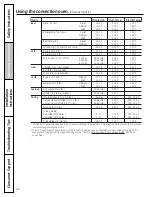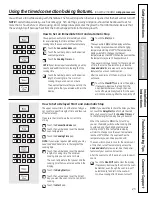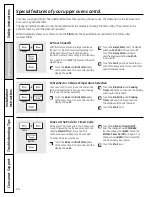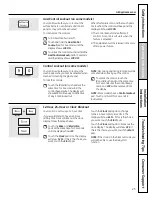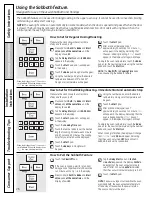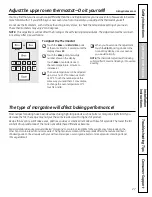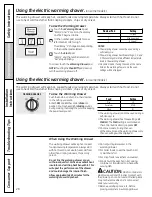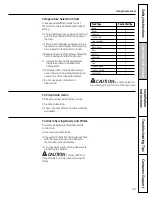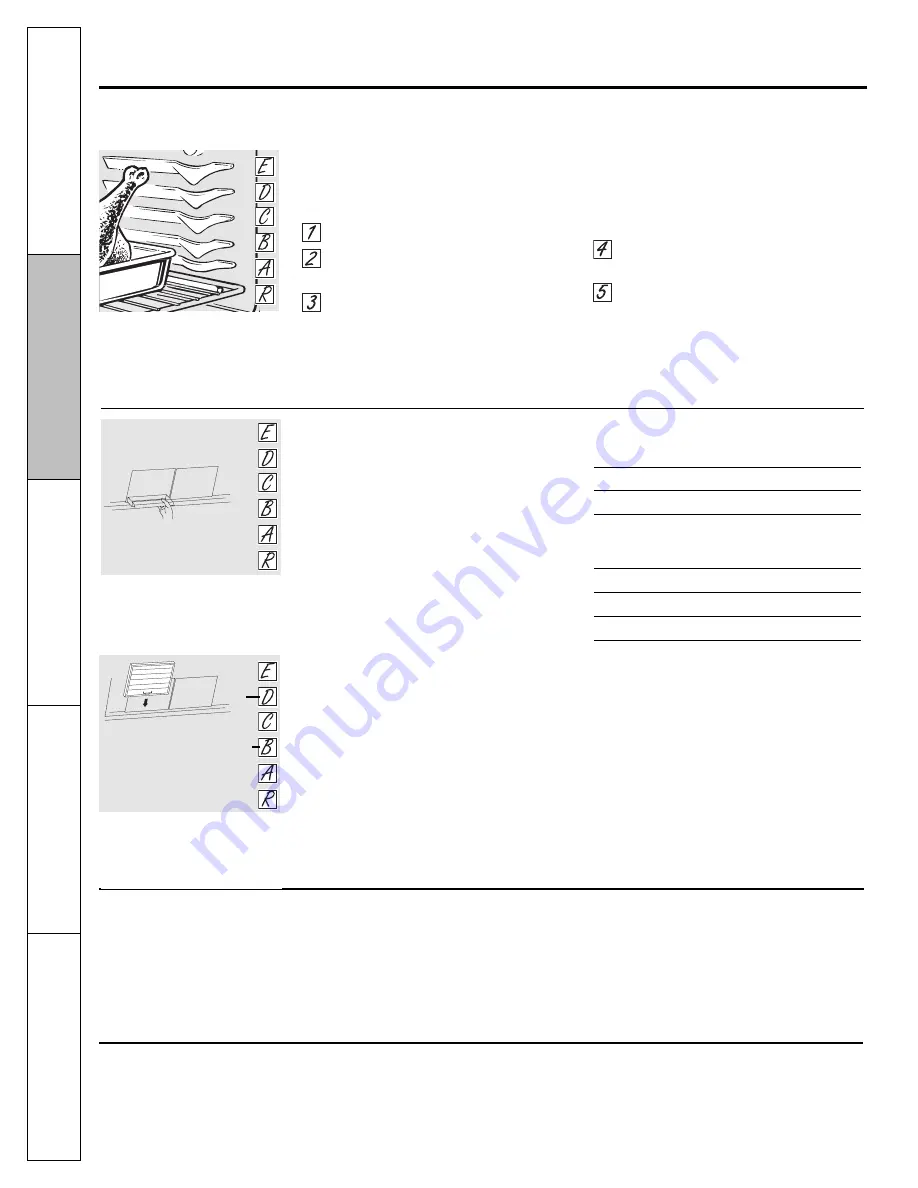
O
pe
ra
tin
g
In
st
ru
ct
io
ns
Sa
fe
ty
In
st
ru
ct
io
ns
In
st
al
la
tio
n
In
st
ru
ct
io
ns
Tr
ou
bl
es
ho
ot
in
g
Ti
ps
Co
ns
um
er
S
up
po
rt
14
Using the upper oven.
If your model has a door latch, do not lock the oven door with the latch during baking or roasting.
The latch is used for self-cleaning only.
How to Set the Upper Oven for Baking or Roasting
Your oven is not designed for open-door
cooking.
Touch the
BAKE
pad.
Touch the number pads to set the
desired temperature.
Touch the
START
pad.
The word
ON
and
100°
will be displayed. As
the oven heats up, the display will show the
changing temperature. When the oven reaches
the temperature you set, a tone will sound.
To change the oven temperature during BaKe
cycle, press the
BAKE
pad and then the
number pads to get the new temperature.
Check food for doneness at minimum
time on recipe. Cook longer if necessary.
Touch the
CLEAR/OFF
pad when
cooking is complete.
Preheating and Pan Placement
Preheat the oven if the recipe calls for it.
To preheat, set the oven at the correct
temperature. Preheating is necessary
when convection baking and for good
results when baking cakes, cookies,
pastry and breads.
Baking results will be better if foods are
centered in the oven as much as possible.
Pans should not touch each other or the
walls of the oven.
For best results when baking four cake layers
at a time, use racks B and D. Place the lower
pans at the back of the rack and the upper
pans at the front of the rack as shown so that
one pan is not directly above another leaving
approximately 1-1/2" between pans, from
the front, back and sides of the walls.
Oven Moisture
As your oven heats up, the temperature
change of the air in the oven may cause
water droplets to form on the door glass.
These droplets are harmless and will
evaporate as the oven continues to heat up.
The oven has a special low rack (R)
position just above the oven bottom.
Use it when extra cooking space is
needed, for example, when cooking
a large turkey. The rack is not designed
to slide out at this position.
Aluminum Foil
Do not use aluminum foil to line oven bottoms.
The foil will trap heat below and upset the
performance of the oven. Foil can melt and
permanently damage the oven bottom.
Damage from improper use of aluminum foil is
not covered by the product warranty.
Foil may be used to catch spills by placing a
sheet on a lower rack, several inches below
the food .Do not use more foil than necessary
and never entirely cover an oven rack with
aluminum foil . Keep foil at least 1-1/2” from
oven walls to prevent poor heat circulation.
Type of Food
Rack Position
Angel food cake
A or C
Bundt or pound cakes
A or C
Biscuits, muffins, brownies,
C
cookies, cupcakes,
layer cakes, pies
Casseroles
B or C
Pies – On cookie sheet
B or C
Roasting
R or A
4-Layer cakes
B & D
When baking on a single rack, use
the rack position from the chart for your
type of food. Baking results will be
better if baking pans are centered in
the oven as much as possible.
When baking four cake layers at a time,
use racks B and D. Place the lower pans
at the back of the rack and the upper
pans to the front of the rack shown so
that one pan is not directly above another.






















